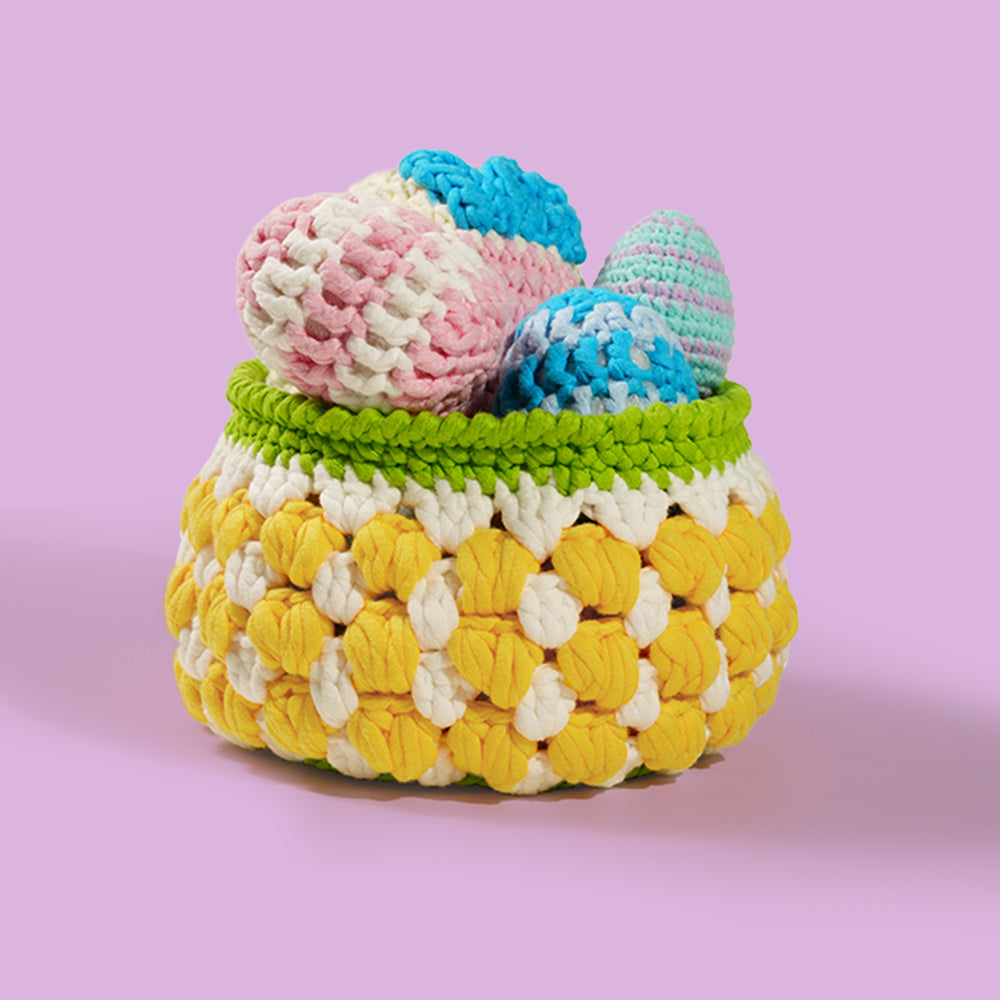What’s the Best Way to Start a Crochet Project: Chain, Foundation Row, or Magic Ring?
Introduction
Every crochet project starts with a single step—but which step is the right one?
Whether you're working on a cozy blanket, a wearable accessory, or a tiny amigurumi friend, choosing the right starting method can make your project smoother, easier, and better-looking. The three most common ways to start are:
-
The traditional chain + first row
-
The foundation stitch row
-
The magic ring (or adjustable loop)
Each has its own strengths, quirks, and ideal use cases. In this post, we’ll break down what each starting method is, when to use it, how it works, and how to decide which is best for your crochet project.
1. Starting with a Chain and First Row
What It Is
This is the most classic method: make a series of chain stitches (ch), then work your first row of stitches (sc, hdc, dc, etc.) into those chains.
Best For
-
Scarves, blankets, dishcloths
-
Flat projects worked in rows
-
Beginners learning basic structure
Pros
-
Simple and widely used
-
Easy to count stitches
-
Good control over length
Cons
-
Chains can twist or tighten
-
Harder to work into small chains
-
Can feel tight at the base if tension is uneven
Tips
-
Use a larger hook for your starting chain to prevent tightness.
-
Mark every 10 chains for easy counting.
-
If the base curls, don’t worry—blocking usually fixes it.

2. Foundation Stitches (FSC, FDC, etc.)
What It Is
Instead of chaining first, you work your base and first row at the same time using foundation stitches like foundation single crochet (FSC) or foundation double crochet (FDC).
Best For
-
Projects that need stretch, like cuffs or necklines
-
Avoiding tight, stiff edges
-
When you don’t know how long you want the row to be
Pros
-
More flexible and stretchy
-
Saves time (one step instead of two)
-
Great for garments
Cons
-
Slight learning curve for beginners
-
Harder to count stitches at first glance
-
Not ideal for very short chains
Tips
-
Practice with FSC first—it's the easiest to learn.
-
Keep tension even to avoid wavy edges.
-
Use stitch markers every 10 stitches to stay on track.

3. Magic Ring (Magic Circle)
What It Is
A looped starting technique used for projects worked in the round—like hats, toys, and mandalas. Instead of chaining and joining into a ring, you create a loop and crochet stitches directly into it, then pull the loop tight to close the center.
Best For
-
Amigurumi
-
Hats, coasters, circular motifs
-
Any round project that needs a tight center
Pros
-
No hole in the middle—tight and clean start
-
Looks professional
-
Ideal for small or detailed round shapes
Cons
-
Tricky to master at first
-
If not secured, it may loosen over time
-
Can be fiddly with thicker yarns
Tips
-
Practice slowly; it’s all in the hand motion.
-
Always secure the tail tightly at the end to prevent undoing.
-
If the ring won’t stay closed, try a double loop version.

So… Which One Should You Use?
Here’s a quick reference guide:
|
Project Type |
Best Starting Method |
|
Blanket or scarf |
Chain + first row |
|
Garment or hat band |
Foundation stitches |
|
Amigurumi or motif |
Magic ring |
|
When unsure of row size |
Foundation stitches |
|
Need a solid, closed center |
Magic ring |
Each technique has its time and place. It’s less about right vs. wrong, and more about what works best for your project.
Tips for Beginners Choosing a Starting Method
-
Start with what you know. Don’t stress if you only know how to chain—master that first before moving on.
-
Try foundation stitches on practice swatches before using them in a real project.
-
Use stitch markers liberally when trying a new method.
-
Watch a video tutorial for visual learners—starting techniques can be easier to pick up by seeing them in motion.
Q&A
Q: Is the magic ring really necessary for round projects?
A: Not always. You can chain 2–4 and join into a ring, but the magic ring gives a neater, no-gap center—especially for amigurumi.
Q: Why does my starting chain curl or twist?
A: That’s usually from tight tension or twisting as you work. Try using a larger hook for the chain and lay your chain flat before starting the first row.
Q: Foundation stitches are hard. Should I skip them?
A: If you're just starting out, it’s okay to skip. But once you’re comfortable with chains and rows, learning foundation stitches will open up new project possibilities.
Q: Can I use the magic ring with bulky yarn?
A: Yes, but it can be trickier. If the loop won’t close tightly, try chaining 2 and working your first round into the second chain instead.
Conclusion
Starting your crochet project right sets the tone for everything that follows. Whether you go with a traditional chain, explore the flexible foundation stitch, or dive into a magic ring, the most important thing is knowing why you're choosing it—and feeling confident in that choice.
Each starting method has unique benefits. Try them all, experiment with your patterns, and you'll soon develop a sense of which one suits your project and style.
